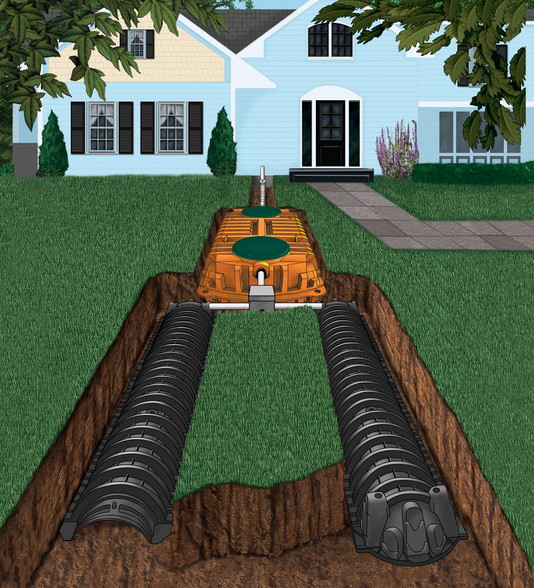Our friends over at the Eco News Network passed along this helpful advice on caring for your septic system. Read up!
The Healthy Home: How to Protect Your Family’s Health and the Environment with Proper Wastewater Management
By Dennis F. Hallahan, P.E., Technical Director, Infiltrator Systems, Inc.
We’ve all heard the nightmare stories. A family just finishes home renovations and extensive landscaping and then it happens…a smelly, messy, and costly waste backup, all because a critical component of the household operating plant — the septic system — was overlooked. Sure, the contractor should have suggested to have it checked before proceeding. But he didn’t. And, after all, the homeowner wasn’t even sure where it was located. This is a scenario that is easily avoided with just a few minor steps that will not only save you headaches and money, but will protect your family’s health.
Septic System 101: The Basics
One in four households in the United States use a septic system onsite to process household waste consisting of blackwater (toilet waste) and greywater (kitchen and laundry waste). The septic system naturally treats and purifies this wastewater and returns it safely to the environment to recharge groundwater supplies. Sometimes, it’s even incorporated into a reuse system for irrigation, saving even more money for the savvy homeowner. Today’s septic systems are safe, efficient, and cost effective. They can be basic or they can be designed with special features and components for homes with high water use or those in environmentally sensitive areas.
What Makes Up A Septic System?
Each septic system has two basic components: A septic tank and a leachfield (sometimes called a drainfield). Wastewater travels from the home through the waste pipe and into the septic tank. Primary wastewater treatment occurs in this tank where bacteria digests organic materials in the wastewater. The effluent then flows into the leachfield for secondary treatment. Here, bacteria completes the digestion and purification process as the wastewater slowly leaches back into the soil. The leachfield can be made of plastic leaching chambers or old-fashioned stone and pipe or even other products. Septic systems can also have filters and other advanced components depending on your geographical location, local codes and regulations.
Why Do I Need To Know All This?
A septic system may be out of sight, but it definitely should not be out of mind. Just as you need to have your furnace serviced and keep the oil changed in your car, proper general maintenance and awareness of your daily living habits and your system’s operation will improve the life and health of your system, protecting your home investment and your family.
How Do I Operate a Healthy System?
Conserve water. Large volumes of water entering the system over a short period of time will flush untreated solids out of the tank before this pretreatment process is complete.
Keep drains clean. If it’s not biodegradable, it doesn’t belong in the system.
Schedule Regular Maintenance. Most septic tanks need pumping every three to five years. High water usage may result in the need for more frequent service.
Keep surface water away.
Encourage the right plants.
Avoid physical damage.
If I Suspect A Problem, What Should I Do?
Contact a professional septic contractor for help. Should a repair or replacement be necessary, review your options carefully. Ask about new environmentally superior technologies, such as chamber leaching systems.
What Kinds Of Records Should I Keep?
Keeping a septic system location map and maintenance log is an important step in understanding and managing your septic system. A free septic system care brochure that includes how to graph your system’s location and how to create a system maintenance schedule is available by visiting the Infiltrator Systems’ website at infiltratorsystems.com. The website also offers general information on septic system selection and care.
Credit: Eco News Network




























